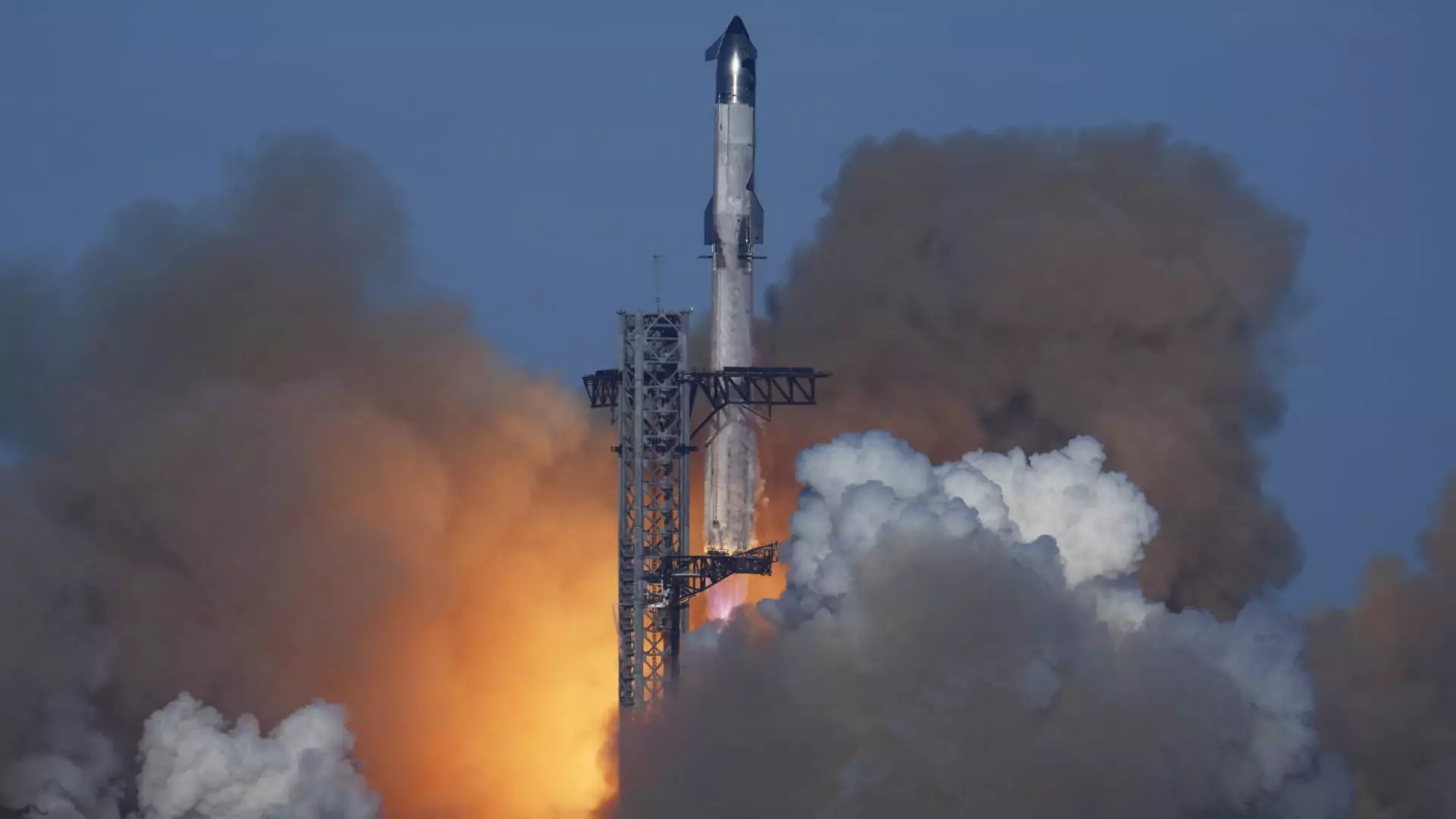The recent seventh test flight of SpaceX’s ambitious Starship rocket has captured attention not just for its innovative technology but also for the unexpected challenges it faced early in the launch. This article explores the intricacies of the flight, the implications of the lost communication with the upper stage, and what this means for future endeavors in space exploration.
On a Thursday evening, SpaceX initiated its latest Starship test flight, hoping to achieve significant milestones in rocket performance. However, a mere nine minutes into the launch, communication was abruptly lost with the upper stage of the rocket. Kate Tice, a senior manager in the company’s quality systems engineering division, confirmed the loss, stating bluntly, “We can confirm that we did lose the ship.” The gravity of this statement is underscored by the continuous stream of data that stopped abruptly, suggesting a sudden anomaly in the rockets’ function.
Following the communication breakdown, social media platforms erupted with amateur videos and images showcasing fireballs in the sky—a likely result of debris from the rocket as it reentered the atmosphere. This event not only ignited public interest but raised concerns within aviation circles as the Federal Aviation Administration (FAA) issued warnings to pilots about potential falling debris, temporarily diverting several commercial flights.
The risks associated with rocket launches are multifaceted, especially considering the increased competition for airspace. SpaceX, known for its innovative and sometimes risky approaches, faced the challenge of managing both the launch and the simultaneous operation of aircraft in nearby airspace. The crowded schedule mandates preparations that ensure flight safety and compliance with existing protocols. The FAA’s acknowledgment of an anomaly highlights the importance of regulatory oversight in managing such risks.
SpaceX, launching from its private facility in Texas, successfully landed its Super Heavy booster shortly after takeoff. This precision demonstrated SpaceX’s incremental advancements in rocket reusability, critical for reducing space exploration costs. The fact that this was the second successful landing of the booster during a flight illustrates the positive trajectory of SpaceX’s developmental strategies, despite the setback with Starship.
Starship’s significance extends beyond just its test flights; it represents a paradigm shift in space exploration technology. The vehicle, not only the tallest but also the most powerful rocket to date, stands at a towering 403 feet with a striking 30 feet in diameter. With 33 Raptor engines that provide a staggering 16.7 million pounds of thrust, Starship’s engineering is designed to challenge the current limitations of conventional rockets.
Moreover, the mission included ten “Starlink simulators” designed to pilot potential satellite deployment, emphasizing the rocket’s role in expanding global internet access. Although the intended deployment did not occur due to the premature loss of data, the integration of mass simulators for testing solidifies SpaceX’s intent to prepare for future launches that will send heavier payloads into orbit.
Despite the setbacks faced during this test flight, SpaceX remains committed to analyzing the data from the flight to understand the root cause of the failure. The iteration of Starship, referred to as “Block 2,” includes significant upgrades intended to improve performance and reusability. These advancements—ranging from redesigned flaps to reinforced heat shields—illustrate a commitment to innovation even amidst failure.
This approach reflects a larger philosophy in aerospace development: that each setback serves as a learning opportunity, paving the way for eventual success. The use of a previously flown Raptor engine in this flight is a clear example of how SpaceX is striving to lower costs while enhancing performance.
The importance of Starship doesn’t only lie in its design but in its capacity to fulfill larger ambitions, including NASA’s Artemis program aimed at returning humans to the Moon. SpaceX’s contract for a crewed lunar lander emphasizes the trust that federal agencies put into commercial space enterprises. As SpaceX evaluates the data from this latest flight, the lessons learned will undoubtedly inform future missions and design iterations.
Starship stands as a testament to the spirit of exploration and innovation, its failures no less significant than its successes. The road to redefining how humanity interacts with space is fraught with challenges. However, in the case of SpaceX, every flight—even those with setbacks—advances the conversation and technology of space travel. The world watches eagerly as SpaceX continues to forge its path in the cosmos, embodying a future that seems just within reach.

